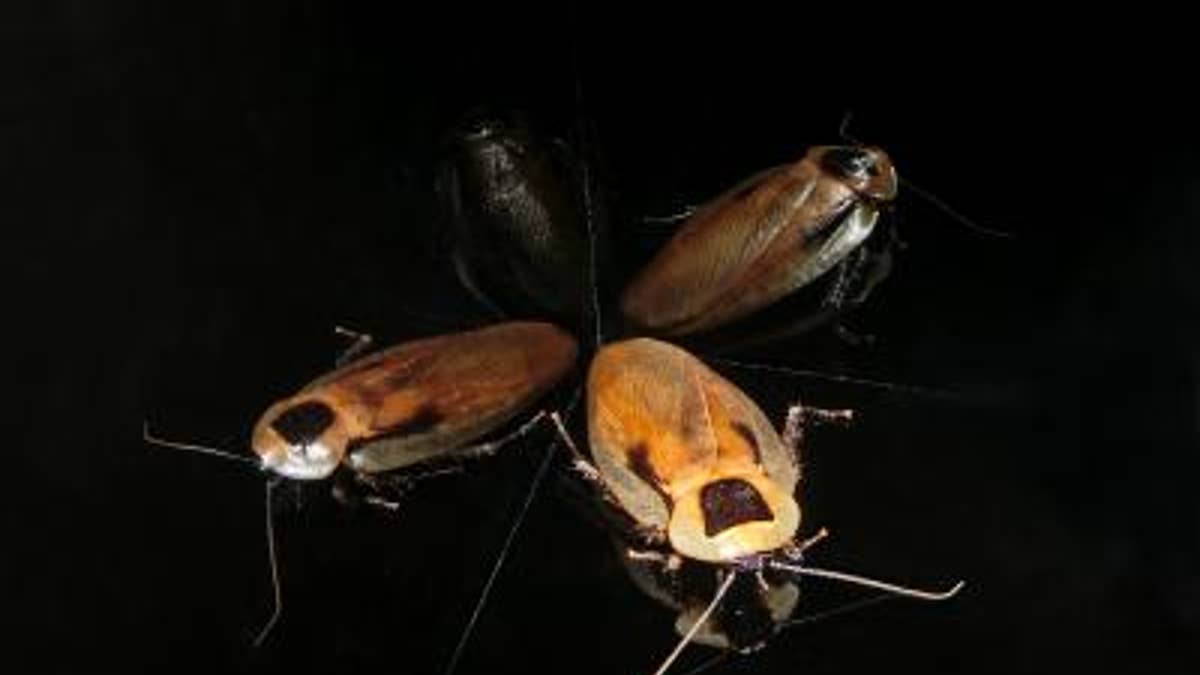
Cockroaches have internal GPS that's similar to rats and humans. (Adrienn G. Varga)
When navigating your kitchen, cockroaches likely don't need to stop for directions. Turns out, the pesky insects have an internal GPS.
That navigation system, which relies on head direction and contextual cues, is similar to one that's used by rats and even humans, the researchers said.
The mechanism is likely an example of convergent evolution — when distinct animals develop similar systems independently to manage the same problems, the researchers said. [20 Startling Facts About Insects]
To uncover this internal GPS, the researchers put cockroaches (Blaberus discoidalis) through the same experiments that are used to uncover the navigational brain cell activity in rats.
The roaches had to complete several orientation tasks while the activity in the brain's central complex area was being monitored. The research revealed how the roaches oriented themselves in an environment.
Placed on a rotating platform, the insects were encircled by a black wall with a single, removable landmark: a white square. The cockroaches were then rotated 360 degrees a number of times, in 30-degree increments, both clockwise and counterclockwise.
Related:
The cell activity in the roaches' brains signaled the direction they turned, similar to humans, the researchers found.
"For instance, imagine walking toward a door when the door is there, compared to when it used to be there, but someone removed it. It's easier to precisely encode direction when there is some kind of a reference point we can compare our heading to," lead study author Adrienn Varga, a doctoral student at Case Western Reserve University, told Live Science in an email. "Same with cockroaches apparently," Varga said.
Cell activity peaked hen the white card was inserted in the wall, indicating that the roach's head angled toward the visual reference. Without the white card, activity in the same brain cells indicated that the roaches knew their orientation, despite its absence.
"The fact we found these cell activities that are very similar to those in mice and rats, and us, strongly indicates insects rely on the same sensory inputs we need to orient ourselves, and their brains process these inputs in a similar manner," Varga said in a statement.
Tests also included placing a foil cover over the heads of the cockroaches to block any visual clues. Brain activity in the blinded roaches indicated that some brain cells do not need visual cues. When the foil was removed, the cell activity reflected the roaches' heads shifting toward the visual reference point. This suggests that their internal GPS was remapping to include the new visual information, according to the researchers.
"Each animal has receptors that take in critical information in order to navigate a complex environment," study researcher Roy Ritzmann, a biology professor at Case Western Reserve University, said in the statement.
Ritzmann predicts that almost all animals have a similarly structured internal GPS, which may have become more specialized and sophisticated in some species over time.
Original article on Live Science.
Copyright 2016 LiveScience, a Purch company. All rights reserved. This material may not be published, broadcast, rewritten or redistributed.








































